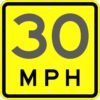Around the world, stop signs are a regular sight at intersections and on roads. These red octagonal signs are placed at intersections and other locations to warn motorists that they must stop completely before passing through. Stop signs are a crucial component of traffic management since they help to control traffic flow and reduce accidents.
Stop signs come in a variety of forms. The traditional red octagonal stop sign is the most prevalent kind. At junctions and other places where motorists are forced to come to a complete stop, this kind of stop sign is utilized. The roundabout stop sign is another style of stop sign. At roundabouts, which are circular crossroads with one-way traffic flowing around a central island, these signs are utilized. Stop signs are frequently used to notify motorists that they must surrender to oncoming traffic when entering a roundabout.
At Cheap Street Signs we offer stop signs in many version, including stop sign paddles for school crossing guards and instructional signs for where to stop when approaching a stop sign.
Stop signs are frequently used in conjunction with traffic signals and yield signs, among other traffic control devices. Drivers must stop when the light is red and move forward when it is green at intersections with traffic lights. Yield signs are frequently used in conjunction with stop signs at junctions to signal to drivers that they must yield to other cars or pedestrians.
Stop signs are frequently disregarded or disregarded by automobiles despite their significance. Stop sign violations are a contributing cause of hundreds of thousands of collisions per year in the United States alone, according to data from the National Highway Traffic Safety Administration (NHTSA). These collisions may cause personal injury or death as well as property damage.
Stop signs are frequently disregarded by motorists, which is one of the reasons why they are. This is particularly true in places with a dense concentration of stop signs or when stop signs are employed in circumstances where they may not be strictly essential. Drivers may be more prone to ignore stop signs if they believe they are being abused or overused.
Communities can employ a few different tactics to increase adherence to stop signs. Reviewing the location of stop signs and removing any that are not absolutely necessary is one strategy. This may encourage drivers to take stop signs more seriously and assist to lessen the notion that they are used excessively. Utilizing other traffic control measures, such as traffic signals or roundabouts, in addition to stop signs is an additional strategy. These gadgets might command greater courtesy from motorists and be more successful at controlling traffic flow.
The design of the road network is another element that may affect how often people obey stop signs. Drivers may be more inclined to disregard stop signs in locations with confusing intersections or many stop signs close together out of annoyance or misunderstanding. In some situations, it might be more beneficial to increase compliance by altering the design of the road and fewer stop signs.
Additionally, there are a few easy techniques that every driver can employ to increase adherence to stop signs. One of the best is to just slow down when you get close to a stop sign. This may make it simpler to come to a complete stop and offer drivers more time to react to other vehicles or pedestrians. Another tactic is to drive through places with lots of stop signs, including residential neighborhoods or school zones, with additional caution. These regions frequently feature more bicyclists and pedestrians, which might raise the danger of accidents if stop signs are disregarded.
In essence, stop signs are a vital part of traffic control. At intersections and other locations, they are used to control traffic flow and stop accidents. However, vehicles frequently disregard or disrespect stop signs, which can result in collisions and injuries. By reevaluating stop sign placement and employing additional traffic management measures in addition to stop signs, communities can increase adherence to stop sign regulations.









